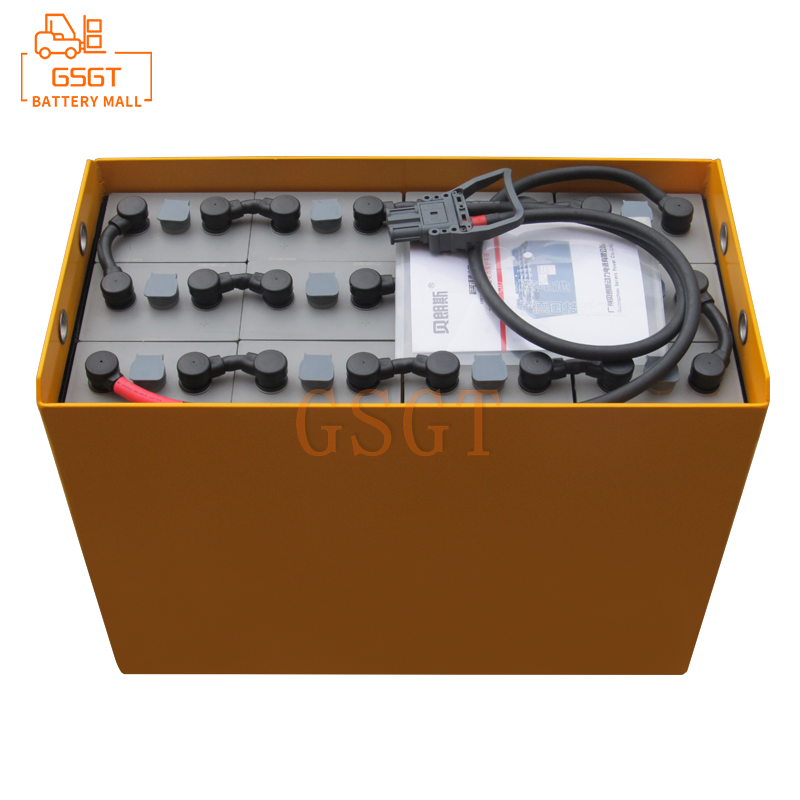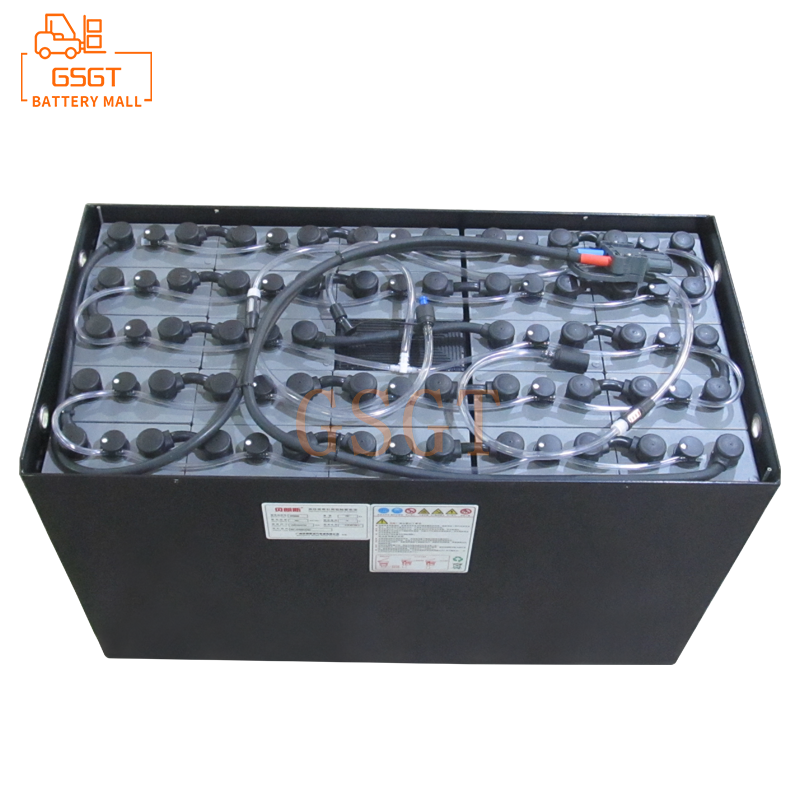Time:2025-07-16 15:16:59
Browse:616
In the field of industrial logistics, forklifts, as core equipment for material handling, the stability of their power sources directly affects operational efficiency. Lead-acid batteries remain the preferred power source for most forklifts due to their low cost and stable output. However, many enterprises often encounter problems such as shortened battery life and frequent malfunctions due to their lack of systematic understanding of the complete battery "charging - discharging" cycle. This article will disassemble in detail the full-cycle process of lead-acid batteries for forklifts, and provide practical guidelines for practitioners by combining common questions in actual operation.
1. Charging Stage: The "Foundation Project" for Battery Performance
The charging process of lead-acid batteries for forklifts is not a simple "plug in and charge", but a precisely controlled system operation that directly determines the battery's discharge efficiency and service life.
The preparatory work before charging is crucial. First, check the appearance of the battery to see if the shell is damaged or leaking. If there are cracks or electrolyte leakage, stop using it immediately and carry out maintenance. Secondly, check the electrolyte level. Under normal circumstances, the liquid level should be 10 to 15mm higher than the plates. If it is insufficient, distilled water should be added (tap water or electrolyte must not be used as a substitute), otherwise it will accelerate the corrosion of the plates. Finally, make sure that the charging circuit is firmly connected and there is no oxidation at the positive and negative terminals. If there is any oxidation, rinse it with hot water and then dry it to avoid poor contact causing sparks.
The charging process must strictly follow the two-step method of "constant current - constant voltage". In the initial stage, constant current charging is adopted, with the current controlled at 1/10 of the battery capacity. At this point, the battery voltage gradually rises, and bubbles start to form in the electrolyte. When the voltage rises to 2.4V per cell, switch to constant voltage charging and gradually reduce the current to avoid overcharging. The entire process should be well-ventilated and kept away from fire sources. At the same time, closely monitor the battery temperature. If it exceeds 45℃, stop charging and wait until it cools down to below 35℃ before continuing. Otherwise, high temperature will cause the active material on the plates to fall off, shortening the battery life.
The determination of the end of charging requires a combination of multiple indicators: the voltage remains stable at 2.7V per cell and shows no significant change within 3 hours; The density of the electrolyte reaches 1.28g/cm³ (at 25℃). The battery surface is uniformly bubbled and in a "boiling" state. At this point, the power supply should be cut off in time to avoid overcharging; otherwise, it will accelerate the evaporation of the electrolyte and the corrosion of the plates.
2. Discharge Stage: The core link for balancing efficiency and protection
The discharge process is the stage where a battery converts chemical energy into electrical energy. Reasonable control of the discharge rhythm can effectively extend the battery's cycle life.
Before discharging, it is necessary to confirm the battery status. If it has just been charged, it is recommended to let it stand for 30 minutes before use to allow the electrolyte to mix fully and avoid affecting the discharge efficiency due to uneven local concentration. When operating a forklift, sudden acceleration and braking should be avoided. Such actions can cause a sudden large current discharge of the battery, not only consuming power quickly but also causing sulfation of the plates. If this continues for a long time, it will significantly reduce the battery capacity.
During the discharge process, it is necessary to pay attention to the voltage changes of the battery. When the voltage of a single cell drops to 1.75V, operation should be stopped immediately and charging resumed. This is the "critical discharge termination voltage" of lead-acid batteries. If the battery continues to discharge (i.e., over-discharge), it will cause irreversible sulfate crystals to form on the plates, commonly known as "sulfation", which directly leads to a decline in battery capacity. Practical data shows that each over-discharge can shorten the battery life by 10% to 15%. Therefore, forklift operators should develop the habit of constantly checking the battery gauge to avoid damaging the battery due to "overwork".
Different operation intensities have a significant impact on the discharge efficiency. When operating under light load, the battery has a small discharge current and a high energy conversion rate, and can work for 8 to 10 hours on a single charge. When operating under heavy loads, the discharge current increases, energy loss rises, and the battery life will be shortened to 4 to 6 hours. It is recommended to plan the charging time reasonably based on the workload to avoid the forklift stopping due to the battery running out in the middle.
3. Key Q&A: Resolving Common Confusions in Practical Operations
Question: Is it a normal phenomenon for the battery casing to get hot and scalding when charging?
Answer: It is normal for the battery to slightly heat up during charging (with a temperature not exceeding 40℃), as this is a manifestation of energy release from chemical reactions. However, if the temperature exceeds 45℃ and continues to rise, it is an abnormal situation, which may be caused by the following reasons: First, the charging current is too large. It is necessary to check whether the charger is compatible (for example, charging a 200Ah battery with a 30A charger will cause current overload). The second is an internal short circuit of the battery. At this time, it will be accompanied by severe foaming of the electrolyte and abnormally low voltage. Charging should be stopped immediately and the battery replaced. The third issue is poor ventilation. In the hot summer environment, fans should be turned on to cool down and prevent heat accumulation.
Question: If the battery life significantly shortens after one year of use, is it necessary to replace it?
Answer: Not necessarily. The shortened battery life may be caused by reversible factors such as sulfidation and insufficient electrolyte. You can try to repair it first: First, add distilled water to the standard liquid level, let it stand for 2 hours, and then use the "balanced charging" mode to charge continuously for 12 to 16 hours to allow the electrolyte to fully react and dissolve some sulfate crystals. If the battery life is still less than 60% of that of a new battery after repair and the voltage drops rapidly after charging, it indicates that the plates have severely aged. At this point, the battery needs to be replaced. Generally speaking, the normal lifespan of a forklift lead-acid battery is 1,500 cycles (i.e., charge and discharge cycles), which can be extended if properly maintained.
4. Full-cycle Maintenance: The core strategy for Extending Battery Life
The management of a complete cycle not only includes the charging and discharging stages, but daily maintenance is equally important. The density of the electrolyte should be checked once a week, measured with a hydrometer. If it is lower than 1.25g/cm³ (at 25℃), it needs to be recharged. The battery surface needs to be cleaned every month. Use a dry cloth dipped in soda water to wipe the shell and terminals to neutralize acidic substances and prevent corrosion. Every quarter, it is necessary to check whether the battery connection wires are loose and tighten the terminal nuts to ensure good conductivity.
In addition, batteries that have been idle for a long time need special treatment: If the forklift is not used for more than one month, the battery should be fully charged first, then the positive and negative connection wires should be disconnected, and it should be recharged once a month to avoid sulfation caused by self-discharge. The storage environment should be dry and well-ventilated, with the temperature controlled between 5 and 30 degrees Celsius, and kept away from direct sunlight and heat sources.
The complete cycle of "charging - discharging" for forklift lead-acid batteries is a closely interlinked systematic project. The operational details of each link directly affect the battery's performance and lifespan. For enterprises, mastering scientific management methods can not only reduce equipment failure rates and lower replacement costs, but also ensure the continuous and efficient operation of forklifts, providing stable power support for logistics transportation. From the meticulous inspection before charging to the timely maintenance after discharging, every step of careful operation effectively extends the service life of the equipment and also provides a strong guarantee for production efficiency.

$4690

$2530

$2610

$4220

MESSAGE
Professional And Efficient
Security
Affordable Price
Professional Services